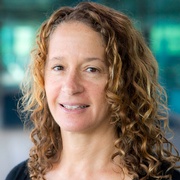How Does ETR Bridge Research and Practice? Examples From Equity & Inclusion in STEM
By Jill Denner, PhD | July 15, 2022
Addressing inequities requires wisdom from a range of people. Here at ETR, one of our values is that science is foundational which means all our work is informed by research—some of it is even generated or synthesized by our own team of scientists.
Our Research in Equity & Inclusion in STEM
For example, ETR has worked since 2002 to increase access to computer science education in K-12 schools. Studies show that certain groups, including Black, Hispanic, and female students, are still underrepresented in computing fields. To address these inequities, we develop, test, and study strategies that create change at the level of individuals, relationships, and systems of power, as described in ETR’s Health Equity Framework. We also serve as evaluators of federally-funded projects where we help faculty ground their practices (including programs, curriculum, and professional development) in research and support them in translating their research into an effective practice or tool.
This work began in the early 2000s when we developed and studied after-school programs such as the Girl Game Company. More recently with funding from the National Science Foundation, our researchers work in research-practice partnerships with schools, colleges, and community-based organizations. We build relationships and engage in cycles of design, implementation, and research to understand and address challenges to help schools offer inclusive computer science education for all students.
Transforming Research Into Practice
Our partnerships also produce a range of products. These include academic publications that are informed by the teachers, staff, and principals in schools as well as school district administrators, students, and their families. We have created videos that highlight research-based approaches for including Spanish-speaking families in computer science and a toolkit that guides teachers on how to use pair programming in their classes.
Another example is a paper we wrote with and for educators called “How do we do computer science on top of everything else?” We also produce data briefs that summarize data so it can be easily used by educators to strengthen programs and refine teaching practices, and by administrators to inform policy decisions. Recently, we worked with our school and college partners to create a quick guide to help students and families understand the different computing education pathways in their region.
These are just a few of the many ways that ETR is a bridging organization between research and practice. Our interdisciplinary team works closely with practitioners in a range of settings to generate relevant and usable research, to synthesize research so the findings can be put into practice, and to ensure that knowledge generated by research has an impact beyond the academic journals and research community.
Interested in learning more or partnering with us? Please reach out!
Jill Denner (she/her/hers) was a Senior Research Scientist at ETR. She partners with schools, colleges, and community-based organizations to do research on broadening participation in computing and other STEM fields.




